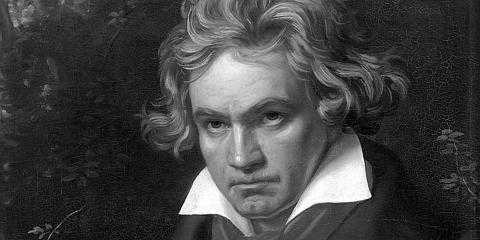MCO’s “Archduke” can be heard on Thursday 1 April 7:00pm AEST on Melbourne Digital Concert Hall via live stream and live in the studio audience at the Athenaeum Theatre, Melbourne.
Ludwig van Beethoven
Allegretto in B flat major WoO39
Piano Trio in B flat major Op 97 Archduke
Ludwig van Beethoven (1770–1827) composed chamber music across a wide range of genres from instrumental solo sonatas, to trios, quartets, quintets, sextet, septet in various combinations of instruments.
Beethoven’s piano trios are among the most important pillars of the chamber music repertoire. They are in many ways the point of reference to the future development of the genre. The piano trios of Haydn and Mozart provided a foundation for Beethoven to develop and push the boundaries of style, expectation and realisation.
The Allegretto for Piano Trio in B-flat major WoO 39 was composed in June 1812 and first published in 1830. The work is dedicated to “little friend”, the ten year old Maximiliane Brentano, daughter of Beethoven’s friends Antoine and Franz Brentano, possibly to encourage her piano playing. In 1821 Beethoven dedicated his Piano Sonata No. 21 in E major to Maximiliane. The Allegretto is in sonata form and is marked by a lyrical and lilting pastoral feel.
© David Forrest 2021
Dedicated to Archduke Rudolf of Austria, the Archduke trio, completed in 1811, is one of Beethoven’s most lyrical and beloved works. The first movement opens with a heartfelt melody over a gently rocking bass played by the piano, which in turn is handed over to the violin. The beauty and rhapsodic nature of the theme itself, not to mention the nature inspired feel of the movement, belies the complexity of the work’s underlying structure – which evolves almost purely out of the theme’s material – a point so intrinsic to Beethoven in general.
The second movement (Scherzo), also in B flat, is a charming, lilting dance, toying somewhat with one’s sense of where the downbeat lies. This quirky feature is developed further in the searching, occasionally volcanic middle section, whereby the piano introduces a new, Polonaise-like theme that uses a hemiola.
Although continuing in a tonic key—this time in D major—the opening bars of the slow movement possess an emotionally-charged quality that is quite indescribable. The movement itself is comprised of five variations, which, if anything, explore the opening mood in increasing depth: the penultimate and final variation have an ecstatic quality. In the most whimsical of ways, the finale returns to life’s simpler things—its pleasantries, customs and graces—with a mood that touches on nostalgia. There are moments of drama and insistence, however (for Beethoven was not one to drift for an inordinate length of time), as well as grief. The work ends with a tarantella based upon the finale’s theme, a whirlwind of distant echoes and playfulness.
Benjamin Martin
Did you know?
WoO refers to Werke ohne Opuszahl (Works without opus number). This is a catalogue, prepared by Georg Kinsky and Hans Halm in 1955, of Beethoven’s works that were not published with an opus number.

